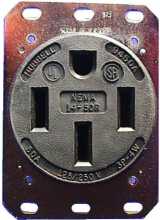If I think how many standards there are in Europe over the same square mile footprint of the USA, you would need a trunkload of adapters for an EU trip VS a US cross counrty the same distance.
Perhaps I made it sound worse than it is.
There is a type of plug called a CEE 7/7 which can be used in virtually every mainland European country. The only caveat is that in Denmark, Switzerland and Italy it is ungrounded - each of those countries still perseveres with its own placement of the earth pin. They can handle 16A at 230V.
As usual, the UK and Ireland have a completely different system called BS1363, although the CEE 7/7 can be forced into a UK socket with brute force and judicious use of a screwdriver in the earth hole (don't try this at home kids). They allow 13A at 240V.
So the bottom line is, if you are planning a European Roadster roadtrip, make sure your charging cord is equipped with a CEE 7/7 connector and it's probably best to get the UK adapter rather than a screwdriver.
In the above picture, the left shows the mainland European socket side of the adapter, with the grounding done through the tabs at the top and bottom. The right side shows the UK arrangement, with its rectangular pins. Note all UK plugs are fused on the appliance side, you can just see this fuse in the hole in the middle of the adapter.
Up to you if you want to take their Danish, Swiss and Italian counterparts, but it's not strictly necessary.






